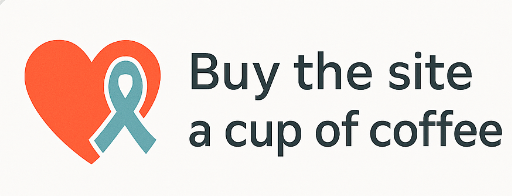Methylene Blue (MB) is best known for its role in light-based cancer therapy, but it also works impressively without any light at all. This powerful effect is called dark toxicity. MB can kill cancer cells on its own by targeting their mitochondria—the “power plants” of the cell—and creating oxidative stress using reactive oxygen species (ROS).
Cancer cells already have high levels of ROS and fewer antioxidants. MB makes this worse by creating even more ROS, like superoxide and hydrogen peroxide. In one study, breast cancer cells treated with MB alone (10 micromolar) experienced 60% cell death, even with no red light.
⚠️ Important Warning: Methylene Blue should not be taken at the same time as apricot seeds (B17). MB is a strong antioxidant scavenger of free radicals. It can counteract the oxidative effect that apricot seeds rely on to damage cancer cells. To keep both therapies effective, separate their timing by at least 8–12 hours.
MB Attacks Mitochondria and Starves the Cancer
MB is drawn into cancer cells because their mitochondria are more negatively charged. Since MB is positively charged, it’s pulled in like a magnet. Inside the mitochondria, MB blocks critical steps in energy production, reducing ATP, and collapsing the mitochondrial membrane potential. A 2024 study on lung cancer showed MB reduced energy by 50% and triggered the cell’s self-destruct switch (apoptosis).
MB Works Without Light — Dark Toxicity in Action
Even without red light, MB can trigger cancer cell death by damaging mitochondria, overwhelming antioxidant defenses, and creating ROS. A 2025 study on brain cancer (glioblastoma) showed 40% cell death without any light activation. The damage was caused by ROS and mitochondrial breakdown.
Radiation Therapy Works Better with MB
Radiation therapy already kills cancer by creating ROS that break DNA. MB boosts this effect by raising baseline ROS levels, making the cancer cell even more vulnerable. In a 2024 study, radiation alone killed 40% of prostate cancer cells—but when MB was added first, the kill rate jumped to 70%.
MB also improves radiation in tumors with low oxygen (called hypoxia), which are usually harder to treat. MB works as an electron shuttle, helping bring oxygen into these zones. A 2025 study found MB improved oxygen by 20% in pancreatic tumors, increasing the effectiveness of radiation.
MB Targets Cancer Cells — Not Healthy Ones
Cancer cells absorb 5 to 10 times more MB than healthy cells. They also have weaker defenses and lower levels of antioxidants like glutathione. This makes them easy targets for MB’s oxidative stress.
In one colon cancer study, MB combined with radiation caused 80% cancer cell death, but only 15% harm to healthy cells. In fact, small doses of MB may protect normal cells. A 2025 study found MB improved energy and reduced stress in healthy brain cells.
Real-Life Cancer Treatments Using MB Without Light
- Brain Cancer (Glioblastoma): MB caused 45% tumor death without light, using 1 mg/kg intravenously.
- Breast Cancer: MB (10 µM) triggered 50% apoptosis without any red light activation.
- Prostate Cancer: MB taken 1 hour before radiation helped shrink tumors by 60% more than radiation alone.
- Lung Cancer: MB increased radiation kill rates by 55%, especially in low-oxygen tumors.
ROS Created by MB Without Light
Even without light, MB still produces:
- Superoxide (O₂⁻) – damages mitochondrial enzymes
- Hydrogen Peroxide (H₂O₂) – spreads stress in the cell
- Hydroxyl Radicals (OH·) – breaks DNA and destroys the cell from within
A 2023 study found MB increased ROS in cancer cells by 2.5x, which was enough to trigger total system failure in those cells.
Final Thoughts: A Powerful Tool That Needs Smart Timing
Methylene Blue is a powerful cancer treatment—even without red light. It destroys cancer cell mitochondria, increases ROS, and makes radiation more effective. Best of all, it spares healthy cells, and may even protect them at low doses.
However, if you are using B17 (apricot seeds) as part of your therapy, it is essential to avoid taking MB during the same time window. B17 works through oxidative pressure. MB works by reducing oxidative stress. Using them together could cancel out both benefits. For the best results, use them in separate windows, ideally 12 hours apart—for example, B17 early in the morning and MB in the evening.
🛒 Please consider showing your support by purchasing through our Amazon links, (it’s usually 1% to the site)— help keep this platform alive for someone who needs it tomorrow.
Purchase Methylene Blue

$1 or $2 can help us grow: Goal is to afford a support forum
💬 Share This Page
Want to help others learn about this? Click to share: This will also help the site grow
👉 Share on Facebook
👉 Share on Twitter
👉 Share on Reddit
👉 Share via Email